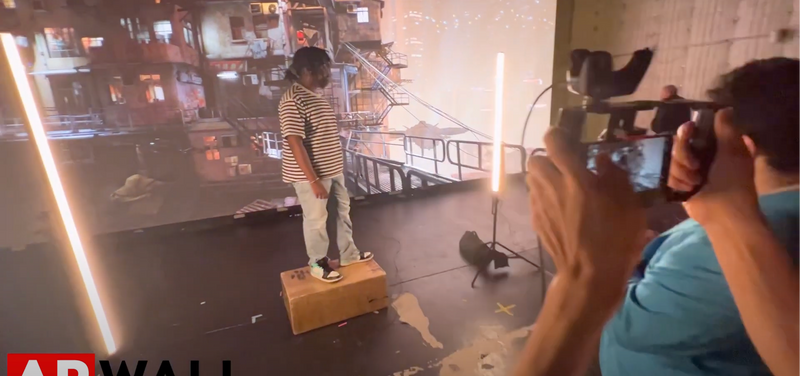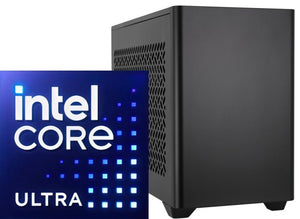What is VFX in Film – Everything About Visual Effects in Cinema

In today’s digital era, cinema has gone far beyond the limits of real-world filming. Audiences no longer expect movies to simply reflect reality — they want to be transported to new worlds, experience breathtaking action, and witness visuals that look larger than life. But how do filmmakers make superheroes fly, recreate ancient cities, or build galaxies that don’t even exist? The answer lies in VFX in film.
VFX, short for Visual Effects, refers to the process of creating or manipulating imagery outside of live-action shooting. It combines creativity with technology to produce visuals that would otherwise be impossible, unsafe, or extremely expensive to capture on camera. Whether you’re watching a Hollywood blockbuster like Avengers: Endgame, an animated masterpiece like Frozen, or a Bollywood epic like Baahubali, VFX plays a central role in shaping the cinematic experience.
In this guide, we’ll explore:
-
What VFX means in films, movies, animation, and cinema.
-
Key VFX techniques like compositing, roto, matte painting, matchmoving, and more.
-
Why is the green screen so commonly used in filmmaking?
-
The software professionals rely on.
-
Costs involved in adding VFX to films.
-
How VFX has transformed Bollywood and global cinema.
By the end, you’ll have a complete understanding of how VFX powers today’s film industry.
What is VFX in Movies?
When you hear the term VFX in movies, it refers to the use of digital imagery to enhance or replace elements of live-action footage. Unlike special effects (SFX), which happen physically on set (like explosions or prosthetic makeup), VFX is created in post-production using computers and software.
Some examples include:
-
Creating fire-breathing dragons in Game of Thrones.
-
Designing futuristic cityscapes in Blade Runner 2049.
-
Crafting war sequences in Baahubali.
In short, VFX allows directors to tell stories that go beyond human limitations and practical sets. It blends imagination with technology to create cinematic magic.

What is VFX in Animation?
While animation is fully computer-generated, VFX in animation enhances visuals by adding realistic elements like water, smoke, explosions, or lighting effects. For example, Pixar and Disney use VFX techniques to simulate natural physics — think of the hair in Brave or the ice effects in Frozen.
VFX ensures animated films look believable, immersive, and visually stunning. It bridges the gap between stylized artistry and realism.
VFX in Cinema: Shaping the Future of Storytelling
The term VFX in cinema is broader — it covers its use in films, television, OTT platforms, and advertising. Today, nearly every production, whether big or small, relies on some level of VFX. Even subtle changes like removing unwanted objects, color correction, or sky replacement count as VFX.
Cinema without VFX is almost unimaginable now. Even films that look "simple" often use VFX to enhance visuals in ways the audience might not even notice.
VFX in Bollywood Films
India’s film industry has witnessed a massive boom in VFX in Bollywood over the past two decades. Movies like Ra.One, Krrish 3, Baahubali, and Brahmāstra relied heavily on advanced VFX techniques to create fantasy universes and attract global audiences.
The success of Baahubali showed how Indian filmmakers can use VFX to compete with Hollywood standards. Today, Bollywood invests heavily in VFX to deliver high-quality entertainment that appeals not only to Indian audiences but also international markets.
How VFX is Used in Movies
VFX isn’t just about flashy action sequences; it’s used in almost every stage of modern filmmaking. Here are some of the ways VFX in films is applied:
-
Set Extensions – Expanding physical sets digitally to create larger environments.
-
CGI Characters – From Gollum in Lord of the Rings to Thanos in Avengers, digital characters are brought to life using VFX.
-
Background Replacement – Filmmakers can shoot on small sets or green screens and later add entire worlds.
-
Crowd Simulation – Instead of hiring thousands of extras, digital crowds are created for battle or stadium scenes.
-
De-aging & Makeup – VFX helps actors look younger (e.g., Samuel L. Jackson in Captain Marvel).
-
Weather Effects – Storms, snow, and fire can be safely simulated.
-
Clean-up Work – Removing wires, rigs, or unwanted elements in the background.
Essentially, if you see something unbelievable yet seamless on screen, chances are it’s VFX.

Key VFX Techniques in Film
Now let’s break down the main techniques that make up the VFX pipeline:
1. What is Compositing in VFX?
Compositing is the process of combining multiple visual elements into one seamless frame. For example, merging an actor shot on green screen with a digital cityscape. Tools like Nuke and After Effects are widely used for compositing.
2. What is Roto in VFX?
Rotoscoping (or roto) involves manually tracing around objects in a scene to separate them from the background. This allows VFX artists to insert effects behind or around actors. Though time-consuming, roto is essential for clean, precise effects.
3. What is Matte Painting in VFX?
Matte painting creates digital or hand-painted backgrounds that don’t exist in real life. Think of vast landscapes, fantasy castles, or futuristic skylines. Modern matte painting uses 3D techniques combined with digital artistry.
4. What is Matchmoving in VFX?
Matchmoving (or camera tracking) ensures CGI objects move realistically with live-action footage. For instance, when a spaceship is added to a shaky handheld shot, matchmoving aligns the CGI with the camera’s motion.
5. What is a Clean Plate in VFX?
A clean plate is a shot of the scene without actors or props. It’s used to remove unwanted objects, replace backgrounds, or add digital elements without overlapping issues.
Why Only Green Screen is Used in VFX?
One of the most common questions about visual effects is: why do filmmakers almost always use a green screen?
Here’s why:
-
High Contrast with Skin Tones – Green is very different from natural human skin colors, making it easier for software to isolate actors.
-
Camera Sensitivity – Digital cameras are more sensitive to green, meaning it produces a cleaner image with less noise.
-
Lighting Advantages – Green requires less light than other colors, making shooting faster and more efficient.
-
Efficiency in Post-Production – Since green is rarely found in costumes or sets, it reduces chances of unwanted blending.
Blue screens are also used in some cases, particularly when shooting night scenes or when actors are wearing green costumes. However, green screens remain the industry standard due to their efficiency and clarity.
What VFX Software is Used in Movies?
VFX artists rely on a wide range of tools, each designed for specific parts of the production pipeline. Here are the most popular:
-
Autodesk Maya – Industry leader for 3D modeling, rigging, and animation.
-
Houdini – Known for complex simulations like smoke, fire, water, and destruction effects.
-
Nuke – High-end compositing software used in almost every blockbuster film.
-
Adobe After Effects – Great for motion graphics, simple compositing, and post-production effects.
-
Blender – A free, open-source software that’s gaining traction in the VFX community.
-
ZBrush – Ideal for sculpting highly detailed 3D characters and creatures.
Most big studios use a combination of these tools to deliver polished results. For example, Maya for character animation, Houdini for explosions, and Nuke for final compositing.

Cost for VFX in Films
One of the most practical concerns for filmmakers is: how much does VFX cost? The answer depends on complexity, duration, and quality required.
Here’s a general breakdown:
|
Project Type |
VFX Cost Estimate |
Examples |
|
Low-Budget Films |
$5,000 – $50,000 |
Small indie films with minimal effects (set clean-ups, sky replacement). |
|
Mid-Budget Films |
$50,000 – $500,000 |
Regional cinema, Bollywood films with fantasy/action sequences. |
|
High-Budget Blockbusters |
$1M – $100M+ |
Hollywood blockbusters like Avengers, Avatar, Baahubali. |
In Bollywood, VFX budgets are increasing rapidly. Brahmāstra, for example, had over 4,500 VFX shots, making it one of the most VFX-heavy films ever produced in India.
For filmmakers, it’s important to strike a balance between storytelling needs and budget allocation.
FAQs About VFX in Film
Q1. What is VFX in movies?
It refers to visual effects created digitally to enhance or replace live-action footage, like explosions, creatures, or environments.
Q2. What is VFX in animation?
It enhances animated films with realistic effects like water, fire, or atmospheric lighting.
Q3. How is VFX used in movies?
VFX is used for CGI characters, set extensions, background replacement, de-aging actors, and more.
Q4. What is compositing in VFX?
It’s the art of combining multiple images and footage into a seamless final shot.
Q5. What is roto in VFX?
Rotoscoping is manually cutting out or isolating elements from a frame to add effects around them.
Q6. What is matte painting in VFX?
It’s the creation of digital landscapes or cityscapes to replace or extend sets.
Q7. What is matchmoving in VFX?
A tracking technique that aligns CGI with live-action camera movement.
Q8. What is a clean plate in VFX?
A background shot without actors or props, used to remove or replace elements.
Q9. Why is only green screen used in VFX?
Because green contrasts with skin tones, requires less lighting, and gives cleaner separation in post-production.
Q10. What VFX software is used in movies?
Industry leaders include Maya, Houdini, Nuke, After Effects, Blender, and ZBrush.
Conclusion: The Power of VFX in Modern Cinema
From Hollywood blockbusters to Bollywood epics, VFX in films has revolutionized the way stories are told. What once required massive sets and thousands of extras can now be achieved digitally with stunning realism.
VFX is not just about spectacle — it’s about enhancing storytelling. Whether it’s creating a believable sci-fi world, de-aging an actor, or simply cleaning up a scene, VFX ensures filmmakers can bring their vision to life without creative limits.
👉 Looking to add world-class VFX to your film project?
Our team of expert artists and software specialists can help transform your vision into cinematic reality.
Get a Free Quote Today and discover how VFX can make your film unforgettable.




